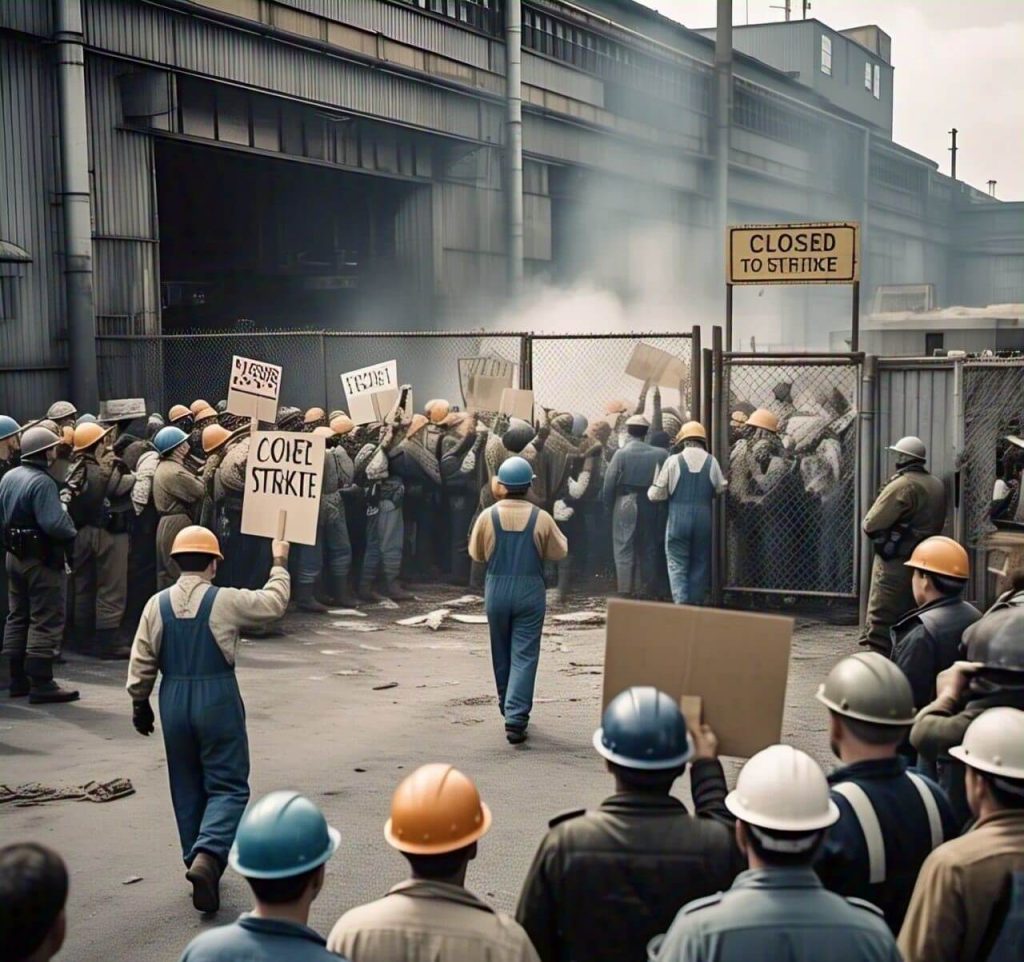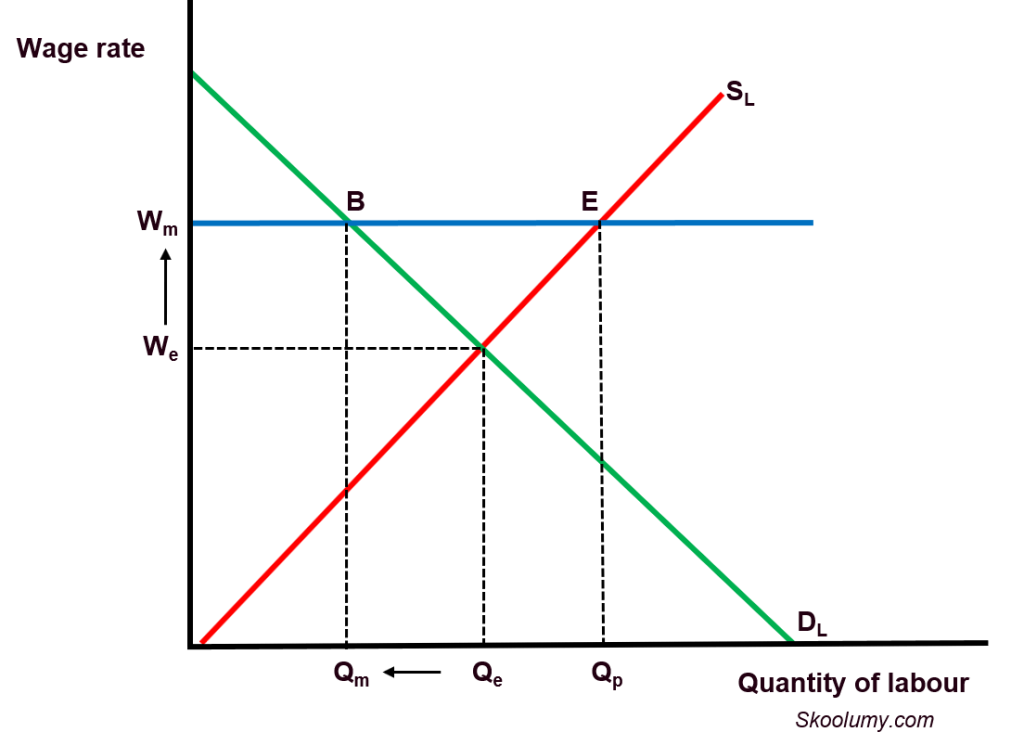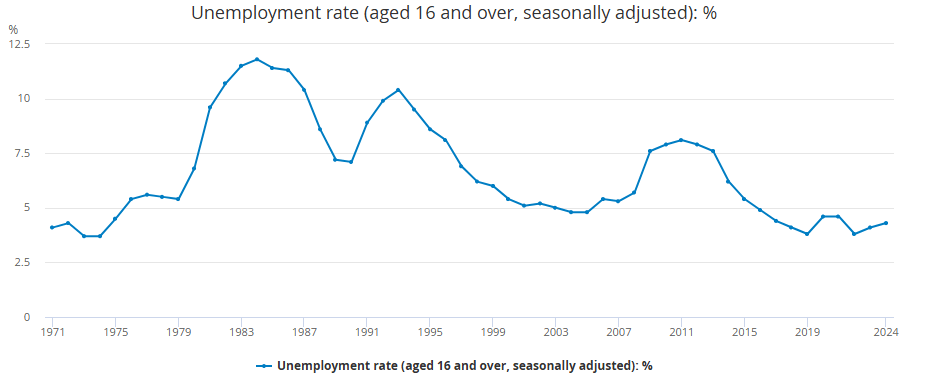What is minimum wage?

A minimum wage, an example of a minimum price, is the lowest hourly wage rate that can be paid to a worker. The minimum wage will only be effective if it is set above the equilibrium wage rate. It is one of the ways the government intervenes in the labour market to protect the low-paid workers and reduce poverty in the society.
Why the call for minimum wage?
The weakening of trade unions has tilted power in favour of employers
Trade unions bring a lot of workers together to speak with one voice. They are supposed to negotiate higher wages for employees through collective bargaining. However, in recent years, trade unions have not been in a good position to protect the low-income earners among their members.
There is strength in numbers. But trade union membership has been under attack over the years. One reason for this decline in membership is changing patterns of employment. It is easier for a trade union to organise workers when manufacturing industries are dominant. As the economy develops, manufacturing is gradually being replaced by the service sector, causing a drastic reduction in the number of workers belonging to trade unions.
Changing patterns of employment
The introduction of flexible working hours and part-time jobs have necessitated the promulgation of minimum wage legislation. These categories of workers who decide to maintain a healthy work-life balance are often stripped of many privileges and rights that full-time workers enjoy. It is, therefore, imperative for the government to step in in the absence of trade unions, to ensure that every worker gets a fair pay that is commensurate with his skill and experience.
High rate of unemployment
Who rejoices when the unemployment rate rises? Of course, business owners! A high unemployment rate means that businesses cannot be pressured into paying higher wages as there is a large pool of workers available to them. Changing seasons, technological changes and structural changes in the economy could cause redundancies or loss of jobs. Consequently, employers have the power to push wages downward, especially for unskilled and semi-skilled workers. Some skilful people may go for low-skilled and low-paying jobs if they cannot get their desired jobs.
Monopsony firm
If there is a dominant or single employer of labour in a region, it has the power to pay the workers less than they are worth, i.e. their productivity. Without a trade union, workers have no power to negotiate a higher wage rate on their own-they do not have options. A minimum wage gives succour in this case.
Discrimination
Workers may not be paid the same wage rate even if they have similar skills due to discrimination. Discrimination may be based on race, colour, gender or religion and it also exists among low-income earners. A minimum wage fixes the same hourly wage rate for workers on low incomes.
Minimum wage in the UK
A minimum wage was introduced in the United Kingdom (UK) in 1999. And the rate is reviewed annually. The current rate is £11.44 for workers aged 21 and above, £8.60 per hour for those aged between 18 and 20 years and £6.40 per hour for those under 18 and apprentices. In the UK, the higher wage earned by workers aged 21 and above is known as a national living wage. Government intervention, via minimum wage legislation, was necessary as many workers were earning very low wages caused by the expansion of the supply of labour for low-paying jobs. The reasons for the growth of low-paying jobs include the following:
Immigration
The rise in the number of immigrants increases the supply of labour which may put downward pressure on wages. A lot of immigrants are attracted to the low-pay sector due to lack of acceptable qualifications and UK-specific experience. Even those that are highly educated may fail to get their desired jobs because some UK employers believe the educational standards in immigrants’ home countries are different from the UK standard; this forces some highly educated immigrants to seek unskilled or semi-skilled jobs.
Changes in the structure of the UK economy
Like other developed countries, the service sector has become dominant in the UK while manufacturing has declined. Declining manufacturing activities reduce trade union relevance, thereby taking away what little protection there was for low-paid workers. Also, the need to balance work and family life has led many, especially women, to accept part-time and flexible working arrangements. But this may come at a cost – a lower hourly wage rate.
Competition from developing countries
Many domestic products are no longer as price competitive as the products from developing countries like China and India. Cheap imports have been replacing some locally-made products, causing domestic industries to lay off workers, including skilled workers. Skilled workers who have lost their jobs are adding to the total supply of workers seeking low-paid and middle-income work. The result is low wages for the people taking up these jobs.
Evaluating the case against minimum wage
The major argument put forward against the national minimum wage is that it increases the labour cost and forces employers to shed some jobs. However, it might not be totally true due to the following reasons.
The nature of the labour market
In a competitive labour market, the quantity of workers employed falls if a minimum wage is introduced. The minimum wage is above the equilibrium wage rate and causes fewer workers to be employed. In Figure 1 below, the minimum wage is Wm which is above the equilibrium wage rate of We; the quantity of labour employed, as a result, falls from Qe to Qm.
 Figure 1: Minimum wage in a competitive labour market
Figure 1: Minimum wage in a competitive labour market
If the employer has monopsony power, that is if it is the only or dominant employer, it may not want to reduce its workforce; it might have talented workers that are difficult to replace if the need arises. It may be that the firm may incur higher hiring cost in future or find it hard to get workers with the required skills.
The elasticity of demand for labour
Demand for labour is elastic if a rise in wage rate leads to a larger reduction in the quantity of workers employed. An inelastic demand, on the other hand, means that there will be a small cut in the quantity of labour due to a wage rise. The elasticity of demand for labour is determined by the elasticity of the underlying product, labour cost as a percentage of total cost and the ease of replacing labour with machines.
If the product that workers are employed to produce has an inelastic demand, the demand for labour will also be inelastic. A wage rise may not lead to a significant cut in jobs if the underlying product, and therefore, labour has inelastic demand. Also, if labour cost is a small percentage of a firm’s total cost, a rise in wage rate would not have much impact making employers not to care about reducing jobs.
Productivity of labour
In the long run, jobs would not be reduced if rising wages incentivise workers to work harder and be more productive. The rising productivity would compensate the firm for additional cost incurred in paying the minimum wage rate.
Growing economy
The experience in some countries is that despite a rise in minimum wage, employment level rises instead of falling. In the UK, for example, the national minimum wage is adjusted from time to time but it has not reduced the number of people employed (the chart below). Source: ONS.GOV.UK
Source: ONS.GOV.UK
Weakness of the minimum wage in reducing poverty
The unemployed are not covered
A minimum wage is one of the ways of tackling poverty. However, it only caters for those who are already working. One of the major causes of poverty is unemployment. Those who have no jobs are left out.
Ineffective if the dependency ratio is high
If a worker has a large number of dependants because he is the only one working in the family, a rise in minimum wage cannot take him or his family out of poverty. A minimum wage can be beneficial if more family members secure employment.
Regional differences in the cost of living
The minimum wage is a national minimum wage as it cuts across the country. Paying every worker the same wage rate irrespective of the region where they live would not be equally beneficial. Those workers living close to the city centres experience higher costs of living than those that live far away. Therefore, the minimum wage would cause a little improvement in the living standard of the workers close to city centres where things are more expensive.